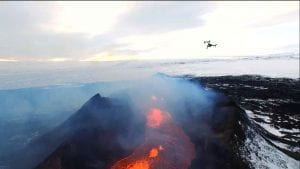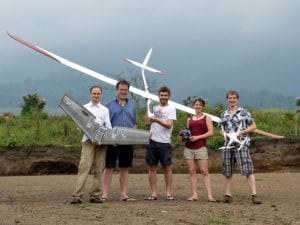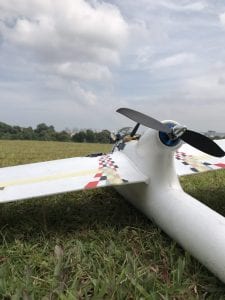Description of our project
The use of remote sensing techniques in volcano monitoring have become increasingly popular in the last twenty years. This, coupled with the surge in drone technology, has led to the rise in prominence of glider drones used for remote sensing. Using drones for volcano monitoring offers many advantages. Dr Emma Liu, a volcanologist from the University of Cambridge, summarized it perfectly: “Drones offer an invaluable solution to the challenges of in-situ sampling and routine monitoring of volcanic emissions, particularly those where the near-vent region is prohibitively hazardous or inaccessible. These sensors not only help to understand emissions from volcanoes, they could also be used in the future to help alert local communities of impending eruptions — particularly if the flights can be automated.”

However, it is also a well-established fact within the drone community (or anyone a with basic understanding of physics): Considering GPE=mgh, drones expend a substantial amount of energy gaining altitude, and this become especially pronounced when these drones climb to a high altitude (> 3 km for volcano surveillance). This means that volcano surveillance drones expend much of their energy in their ascent and lose crucial flight time for their aerial survey, reducing the efficiency of the surveillance operation.

Our project aims to tackle this issue and offer a more refined and energy-efficient method for drone surveillance. We aim to design a balloon-glider drone hybrid, which utilizes a weather balloon to lift a fixed-wing glider up in the air before deploying it to carry out its surveillance activity. We will attempt a proof of concept that a drone can be deployed from a balloon at altitude and successfully carry out its mission. The autonomous glider drone, equipped with various data recording instruments, will then take necessary readings before descending back down safely.
Vision
Our group aspires to help improve the efficiency of volcano drone surveillance operations. Improved duration for surveillance operations can bring back more valuable data which can advance volcanological research, and also maximize the cost-efficiency of such operations. Also, ideally, we aim to work towards all aspects of our design to be recoverable and zero-waste, thus making this a green and innovative method for drone surveillance.

